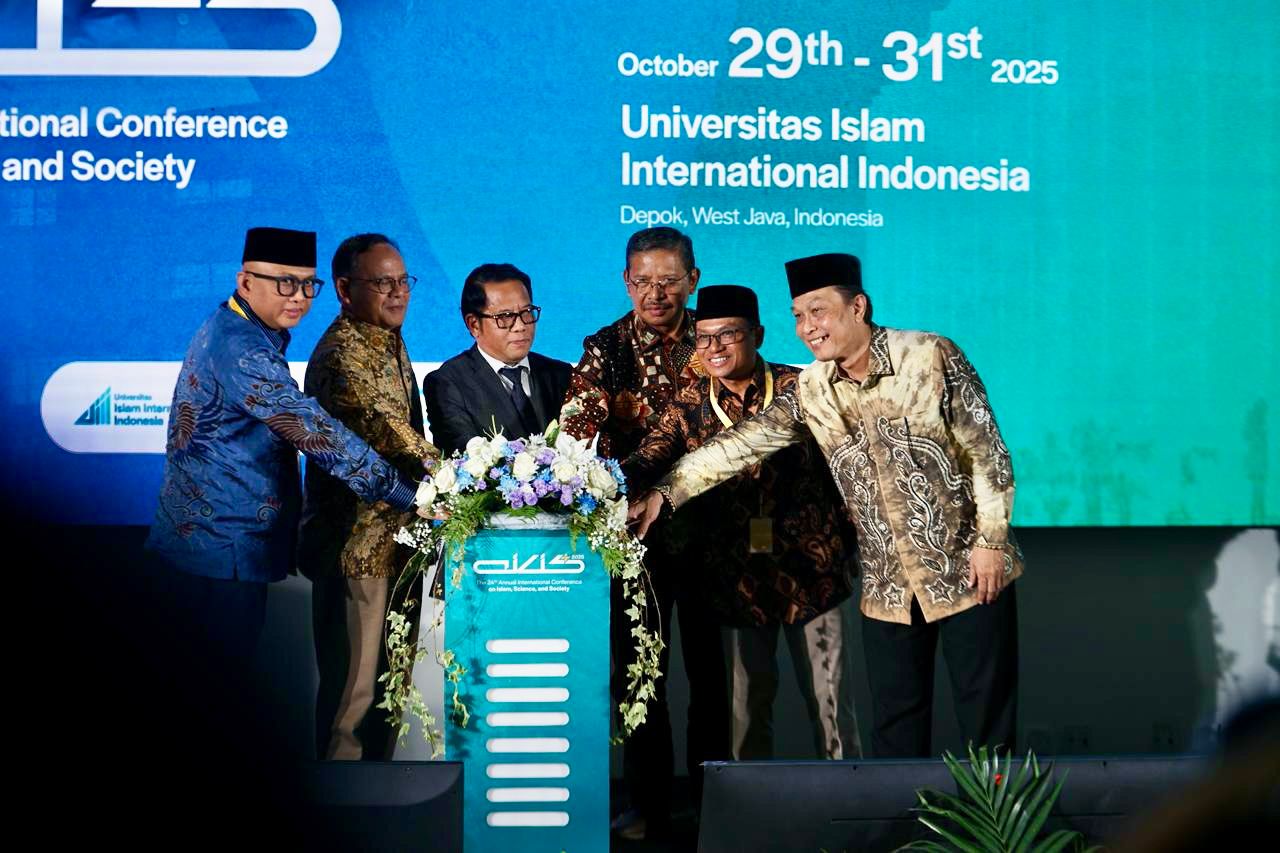October 31, 2025
Contributor: Hassan Barrie | Photo: Achmad Jatnika

The sun smiled but it did not just all began with its rising smile, the morning also started with rising hum of thought. Inside the grand plenary hall of the Joko Widodo Rectorate building, the atmosphere was charged with purpose; the kind of purpose that comes when minds gather to ask the big questions.
A conglomeration of scholars, students, and seekers filled the seats, the murmur of greetings dressed in beautiful smiles gave way to the calm authority of Prof. Dr. Phill. Kamaruddin Amin, the Secretary General of the Ministry of Religious Affairs of Indonesia, whose opening remarks marked the beginning of a day where faith and knowledge would dance in conversation.
Then came the voice that seemed to gather the hall into a single thread, a face and voice that is known in every corner of the UIII campus. An internationally acclaimed scholar, Prof. Farish A. Noor. His words flowed not like a lecture in his normal classrooms, but like a river moving, reflective, and unafraid of depth.
He opened his speech with the question: “What is Islam in the Global South?” From where he wove a tapestry of thought that bound faith, science, technology, and the environment into one living organism. His lecture challenged a long-held academic instinct that technology exists apart from Islam. “It is not an external force,” he said, “but an integral part of how Muslims live, think, and even pray.”
The moment that hushed the hall came when he turned to the environment. The professor reminded everyone that climate change is not just a distant crisis it’s already shaping the sacred. He spoke of pilgrims during Hajj or Umrah collapsing under extreme heat, of sacred journeys now shadowed by global warming, and of the moral responsibility that scholars, believers, and policymakers share.
His call was both spiritual and scientific: that the history of Islamic studies must evolve to include awareness of our environmental responsibilities not as a side topic, but as a central pillar of faith in practice. As he concluded, the audience sat still for a moment longer the kind of silence that means the message has settled deep.
From Reflection to Action: The Breakout Rooms
After the plenary, the crowd dispersed into breakout rooms where theory turned into experience, and abstract ideas took on human form. Various papers on varying topics were discussed in different rooms and people joined rooms based on their interests.
In one room, the discussion on Islamic Economics unfolded like a quiet revolution. Conversations on FINtech and Shariah-compliant innovation showed how financial systems can evolve ethically and how the future of money might be both modern and moral.
Just across the corridor, the session on Ecotheological Symbolism and Environmental Sustainability in Javanese Islamic Architecture brought faith to the very bricks and mortar of buildings. Presenters spoke of mosques designed not only for prayer but for harmony — structures that breathe with nature, collect rainwater, and invite sunlight as if worshiping with those who pray inside.
In another room, a different kind of architecture was being discussed centered on community. The Mangrove School project told the story of coastal women leading the fight for climate adaptation, using ecological literacy as both shield and language. Through storytelling, teaching, and shared experience, these women have transformed local traditions into living lessons on sustainability.
Further still, the Buduy Community brought Ecotheology in Practice to life. Their way of living rooted in reverence for land and water became a sermon of its own, proving that protecting the earth can be an act of devotion as sacred as prayer.
And in a session that bridged faith with modern accountability, another presenter’s work explored “Media Exposure as Nahi Munkar Mechanism.” Here, participants discussed how public oversight, driven by Islamic ethics, could hold corporations accountable for their environmental footprint. Faith, it turns out, can be a watchdog reminding industries that stewardship is not optional.
A Day That Felt Like Tomorrow
By the time the breakout sessions closed, the corridors buzzed with something more than conversation it was connection. Presenters and participants exchanged cards, , and somewhere near the coffee booth, two strangers began planning a collaboration.
What began as a conference on Islam, Science, and Society had, by the end of the day, become something greater a reflection of what happens when belief meets innovation, when spirituality listens to science, and when humanity remembers its shared home.
In every corner of AICIS+ 2025 from the plenary stage to the smallest discussion circle one truth echoed quietly: Faith is not what separates us from the world, but what connects us to its every breath.
As one UIII faculty member beautifully remarked at the closing, “At the heart of AICIS+ is a reminder that knowledge without compassion is incomplete. Islam’s dialogue with science and society is not about dominance — it’s about harmony, stewardship, and shared humanity.”
Universitas Islam Internasional Indonesia